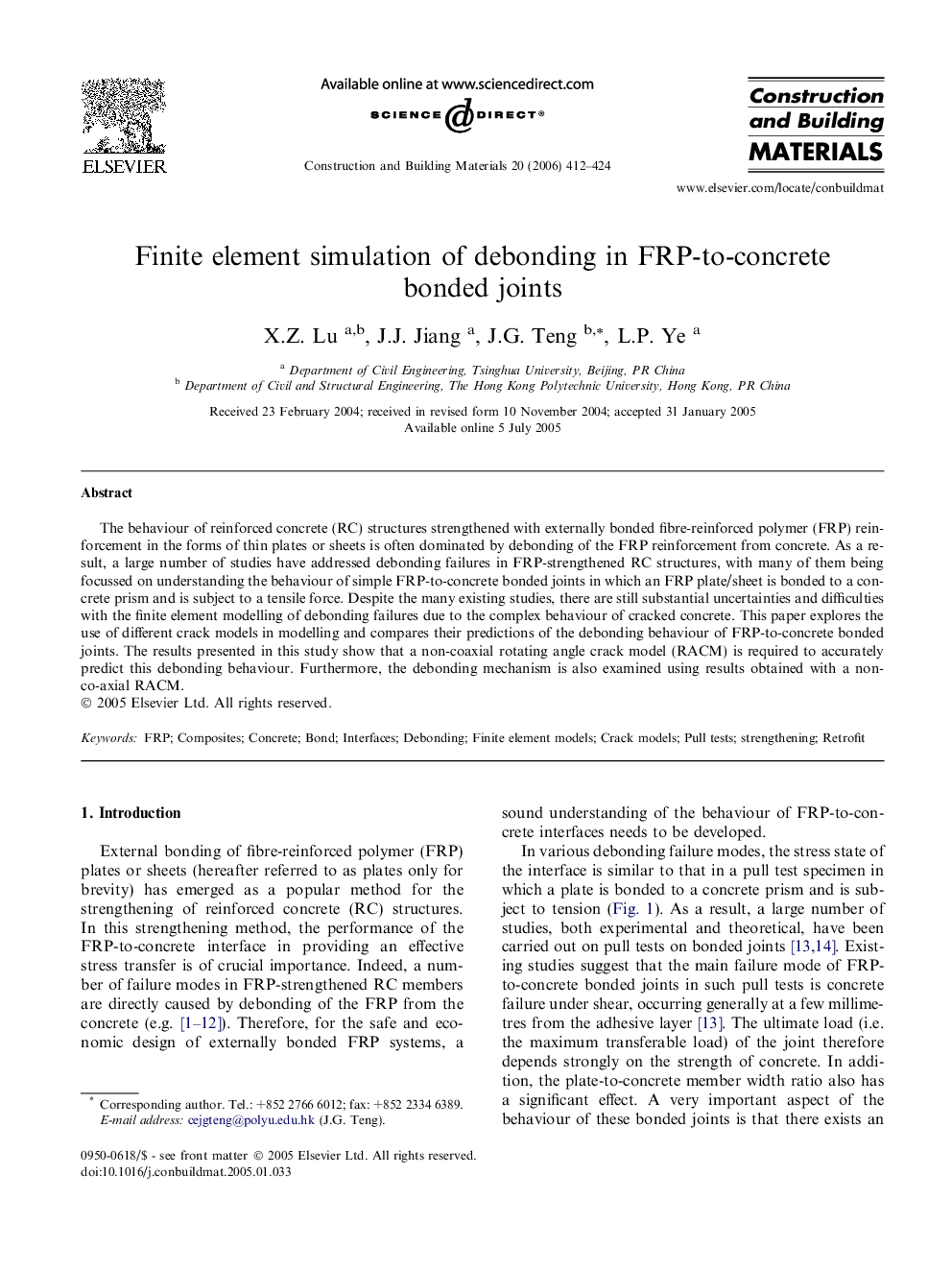| Article ID | Journal | Published Year | Pages | File Type |
|---|---|---|---|---|
| 261084 | Construction and Building Materials | 2006 | 13 Pages |
The behaviour of reinforced concrete (RC) structures strengthened with externally bonded fibre-reinforced polymer (FRP) reinforcement in the forms of thin plates or sheets is often dominated by debonding of the FRP reinforcement from concrete. As a result, a large number of studies have addressed debonding failures in FRP-strengthened RC structures, with many of them being focussed on understanding the behaviour of simple FRP-to-concrete bonded joints in which an FRP plate/sheet is bonded to a concrete prism and is subject to a tensile force. Despite the many existing studies, there are still substantial uncertainties and difficulties with the finite element modelling of debonding failures due to the complex behaviour of cracked concrete. This paper explores the use of different crack models in modelling and compares their predictions of the debonding behaviour of FRP-to-concrete bonded joints. The results presented in this study show that a non-coaxial rotating angle crack model (RACM) is required to accurately predict this debonding behaviour. Furthermore, the debonding mechanism is also examined using results obtained with a non-co-axial RACM.
